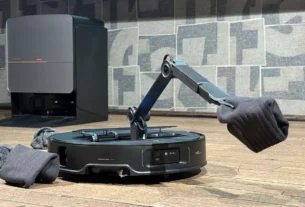For decades, gadgets have been associated with novelty—small, shiny devices that grab attention but fade in relevance after the excitement wears off. Yet in recent years, the landscape has shifted. Today’s gadgets are not just indulgences for tech enthusiasts; they have become integral to how we live, work, and connect with the world. From pocket-sized health trackers to immersive home systems, these tools are reshaping daily routines and even influencing broader cultural trends.
This article explores how gadgets have evolved, which categories matter most in everyday life, and where innovation may take us next.
The Evolution of Gadgets: From Curiosity to Necessity
If we rewind to the early 2000s, a gadget was often something quirky—think MP3 players, clamshell phones, or universal TV remotes. They were fun, but not indispensable. Fast forward two decades, and many gadgets have transcended novelty to become household staples.
The smartphone is the most obvious example. Initially dismissed as a niche product, it now serves as a Swiss Army knife of modern life, merging communication, navigation, banking, entertainment, and productivity into one portable device. The rise of wearables, wireless audio, and smart home systems continues that trend. These gadgets now define how people manage health, secure their homes, and interact with their environments.
This transformation is driven by a shift in mindset: consumers no longer buy gadgets solely for fun; they buy them because these tools save time, improve efficiency, and make life more convenient.
Wearables: Turning the Body Into Data
Wearable technology has matured from a fitness fad into a legitimate category of health and lifestyle management. Devices like smartwatches and fitness bands have become far more sophisticated, capable of tracking heart rate variability, sleep quality, and even blood oxygen levels. Some can alert wearers to irregular rhythms that may signal early stages of heart disease.
The appeal is twofold. First, wearables allow individuals to take control of their wellness without constant trips to a doctor. Second, they gamify health by rewarding users with streaks, badges, or progress charts. This sense of achievement keeps people engaged in habits that might otherwise feel tedious.
Future developments in wearables are particularly exciting. Startups and established firms are experimenting with non-invasive glucose monitors, stress sensors, and even smart fabrics woven directly into clothing. Imagine a shirt that can monitor hydration levels or a patch that analyzes biomarkers through sweat. These are not distant dreams—they’re prototypes in labs today.
Smart Homes: Convenience Meets Control
Smart home gadgets started with simple voice assistants that could play music or answer trivia. Today, they form ecosystems that manage energy consumption, enhance security, and personalize living spaces.
Smart thermostats, for instance, learn a household’s habits and adjust heating or cooling automatically to save energy. Smart lighting systems sync with circadian rhythms, helping people feel more alert during the day and relaxed at night. Video doorbells and connected cameras provide peace of mind, allowing users to monitor homes from anywhere in the world.
The integration of these devices is where the true magic lies. A home equipped with interoperable gadgets can create seamless experiences—for example, dimming lights, locking doors, and adjusting the thermostat all at once when someone says, “Goodnight.”
While convenience is the primary driver, sustainability is a rising factor. Energy-efficient gadgets are helping reduce electricity bills and carbon footprints, making smart homes not just luxurious but also responsible.
Portable Power and Connectivity
Mobile gadgets are only as useful as their batteries and connections allow. Portable power banks, solar chargers, and compact charging stations have become vital accessories, ensuring devices stay alive during long commutes, outdoor adventures, or travel.
Meanwhile, advancements in wireless connectivity—like 5G—are unlocking new possibilities. Gadgets such as AR glasses, mobile hotspots, and handheld gaming consoles depend heavily on stable, fast connections. As networks improve, these devices will integrate even more seamlessly into daily routines, from real-time language translation to cloud-based gaming.
Audio Evolution: Beyond Headphones
Audio gadgets have undergone one of the most dramatic shifts in recent years. True wireless earbuds, once criticized for connectivity issues, now dominate the market with features like active noise cancellation, adaptive EQ, and spatial audio. Over-ear headphones are pushing boundaries with studio-grade sound and marathon battery life.
Smart speakers have also moved beyond simple music playback. They now serve as hubs for home automation, digital assistants, and even healthcare support. Some can monitor air quality, detect unusual sounds like glass breaking, or integrate with telemedicine platforms for remote checkups.
For many people, these gadgets are less about luxury and more about reclaiming focus in a noisy world. Noise-canceling headphones, for instance, are not just for audiophiles—they’re productivity tools in open offices or busy households.
The Rise of Everyday Robotics
Robotics is no longer confined to industrial factories or research labs. Compact robots are quietly entering homes in practical forms. The most common example is robotic vacuums, which have evolved from clunky curiosities into sophisticated machines capable of mapping rooms, avoiding obstacles, and even emptying their own dust bins.
More advanced gadgets include robotic lawn mowers, kitchen assistants, and eldercare robots designed to monitor movement, provide reminders, and offer companionship. While still in their early stages, these tools hint at a future where robots will handle repetitive or physically demanding tasks, freeing humans to focus on higher-value activities.
Sustainability and Gadgets: A Growing Concern
As gadgets multiply, so does electronic waste. The average consumer owns multiple devices—phones, tablets, laptops, wearables—and upgrades them frequently. Manufacturers are beginning to face pressure to design with sustainability in mind.
Modular gadgets, which allow users to replace specific parts instead of the entire device, are gaining attention. Companies are also experimenting with biodegradable materials, energy-efficient processors, and take-back programs that recycle old devices.
Consumers, too, are becoming more conscious of longevity. Rather than chasing every new release, many now prioritize durability, repairability, and software support when making purchase decisions.
Where Innovation Is Heading
Looking forward, the next generation of gadgets will likely blur the line between physical and digital reality. Augmented reality glasses, brain-computer interfaces, and ultra-portable medical devices are on the horizon. These won’t just enhance convenience; they could fundamentally change how humans interact with information and each other.
Imagine a gadget that translates foreign languages instantly in your ear while showing contextual information in your field of view. Or a device small enough to sit on your wrist that monitors your entire cardiovascular system in real time. Such advancements are not science fiction—they’re actively under development.
Final Thoughts
Gadgets are no longer sideshows in the tech world; they are the main stage. They influence how people work, travel, exercise, rest, and connect. While the sheer volume of new releases can be overwhelming, the true measure of a gadget’s worth is whether it genuinely improves life in tangible ways.
The most valuable gadgets today share a common thread: they combine functionality with simplicity. They don’t just dazzle with features—they integrate seamlessly into routines, reduce friction, and give back something invaluable: time.
As innovation continues, the challenge for creators will be balancing ambition with responsibility—building gadgets that not only push boundaries but also respect privacy, promote health, and protect the planet. For consumers, the challenge will be choosing wisely, resisting the lure of novelty for novelty’s sake, and investing in devices that align with personal values and lifestyles.


